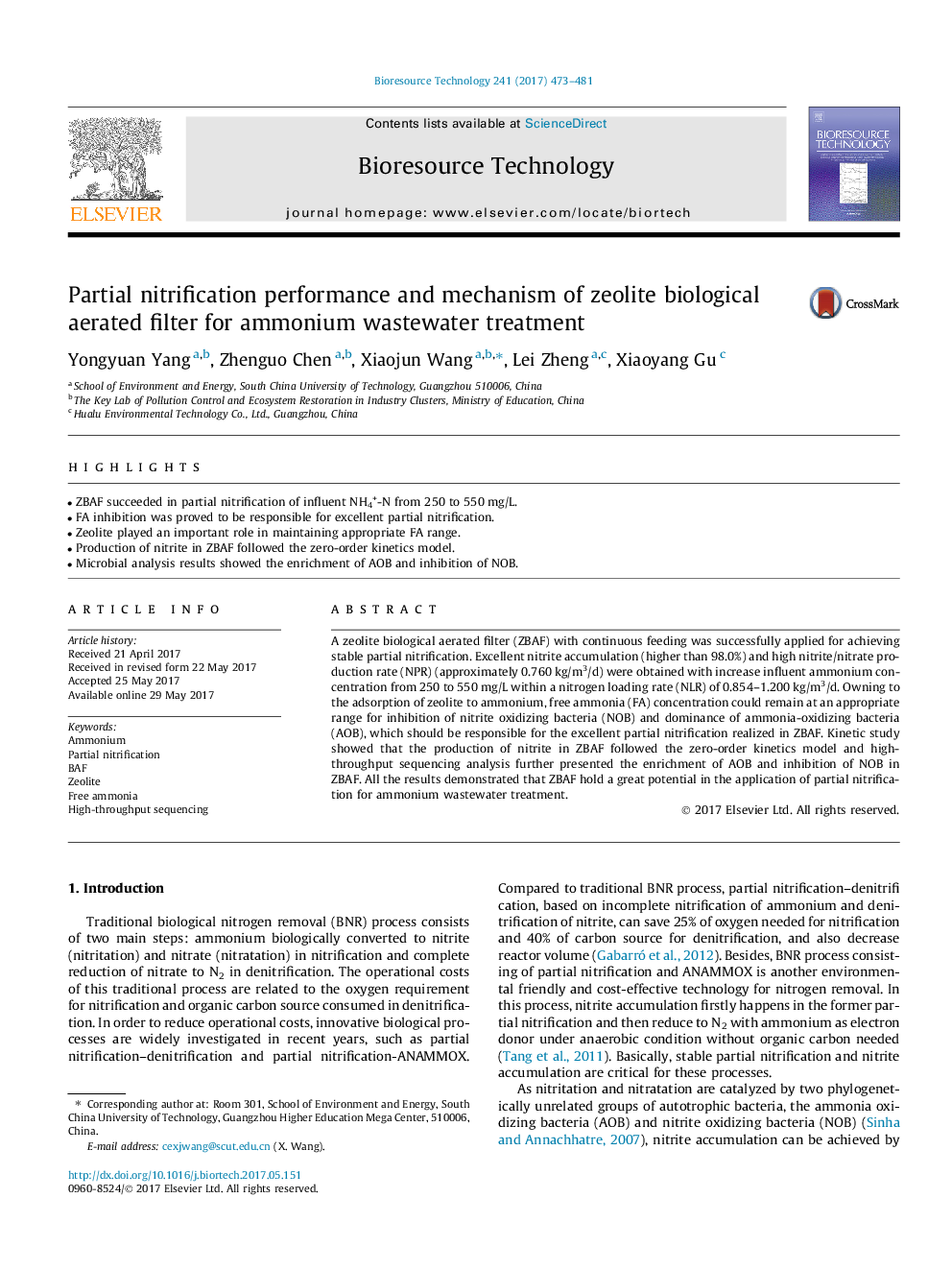| Article ID | Journal | Published Year | Pages | File Type |
|---|---|---|---|---|
| 4997019 | Bioresource Technology | 2017 | 9 Pages |
â¢ZBAF succeeded in partial nitrification of influent NH4+-N from 250 to 550 mg/L.â¢FA inhibition was proved to be responsible for excellent partial nitrification.â¢Zeolite played an important role in maintaining appropriate FA range.â¢Production of nitrite in ZBAF followed the zero-order kinetics model.â¢Microbial analysis results showed the enrichment of AOB and inhibition of NOB.
A zeolite biological aerated filter (ZBAF) with continuous feeding was successfully applied for achieving stable partial nitrification. Excellent nitrite accumulation (higher than 98.0%) and high nitrite/nitrate production rate (NPR) (approximately 0.760Â kg/m3/d) were obtained with increase influent ammonium concentration from 250 to 550Â mg/L within a nitrogen loading rate (NLR) of 0.854-1.200Â kg/m3/d. Owning to the adsorption of zeolite to ammonium, free ammonia (FA) concentration could remain at an appropriate range for inhibition of nitrite oxidizing bacteria (NOB) and dominance of ammonia-oxidizing bacteria (AOB), which should be responsible for the excellent partial nitrification realized in ZBAF. Kinetic study showed that the production of nitrite in ZBAF followed the zero-order kinetics model and high-throughput sequencing analysis further presented the enrichment of AOB and inhibition of NOB in ZBAF. All the results demonstrated that ZBAF hold a great potential in the application of partial nitrification for ammonium wastewater treatment.
